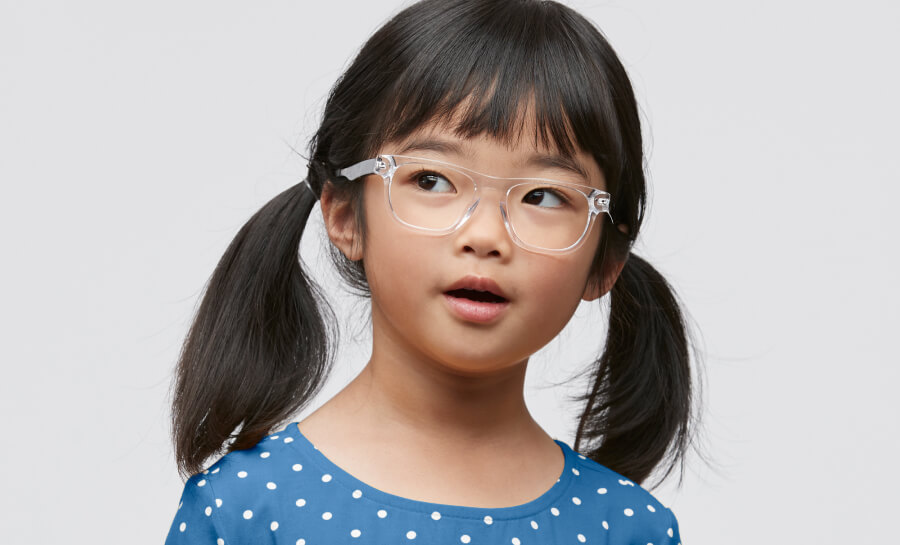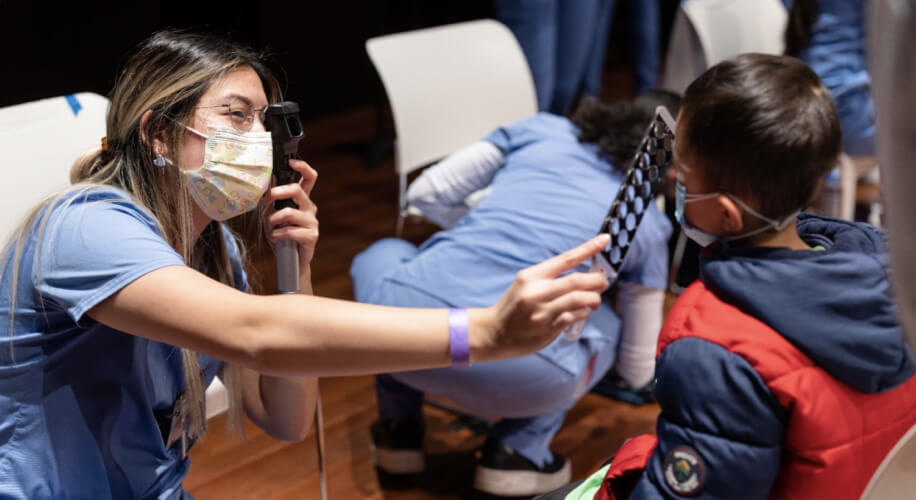Does My Child Need An Eye Exam? Common Vision Problems and How To Spot Them
Read the Spanish Language version

Unsure of whether or not your child may have trouble seeing? With the approach of back-to-school season and children returning to the classroom, parents may notice problems with their child’s vision.
Read on to learn about the common types of vision problems, along with the presenting signs and symptoms that accompany them.

According to Prevent Blindness, the most common vision problems are refractive errors, or an inability for light to focus correctly on the retina (the back of the eye), resulting in a blurry image. The main causes of refractive error include myopia, hyperopia, and astigmatism, which affect vision in very different ways:
Myopia or nearsightedness is caused by light coming to a focus in front of the retina, making distant objects appear blurry. A child with myopia may have trouble seeing the chalkboard in the front of the class if they sit further back.
Hyperopia or farsightedness is considered the opposite of myopia, where light focuses behind the retina. When this happens the eyes can refocus to bring the light to the retina; the closer the object, the more the eyes have to work to refocus. Over extended periods of time someone with hyperopia may experience eye fatigue or strain, resulting in eventual blur at nearby objects. A child with hyperopia may struggle with close work, such as reading a book.
Astigmatism results from an irregularly shaped cornea or lens, resulting in light coming to a focus at different distances instead of a single point. This may cause blurry vision at both far and near, as well as potential complaints of “seeing double” or letters that appear “smudged” or “smeared”.

Now that we’ve discussed refractive errors, let’s look into some of the common signs your child might need an eye exam. It’s important to be on the lookout for your child’s verbal indications, actions, and eye appearance.
Verbal Indications. Listen to your child because they may be telling you that their eyes are giving them trouble. Watch out for them saying that they can’t see the chalkboard at school or that they feel dizzy or nauseated after reading. Not all children will tell their parents that they’re experiencing visual problems, so make sure to ask them yourself or look for other signs.
Actions. Pay attention to unusual behaviors. Do you see them closing or covering an eye, squinting, holding objects extremely close up to their face to see better, or rubbing their eyes constantly?
Eye Appearance. Be on the lookout for signs such as watery/teary eyes, “lazy” eyes, or red/swollen eyes.
If you catch one or more of the above signs or symptoms or simply aren’t sure, do not hesitate to contact your local eye care professional. Remember, if children aren’t complaining or experiencing unusual symptoms, they should still be visiting their optometrist or ophthalmologist regularly.
Zenni wants to improve access to vision care for all children which is why we partnered with Prevent Blindness to create the Zenni Scholarship to Advance Children’s Vision. If you know someone who is passionate about bringing vision screening services to their community, then please share and have them apply here!


 Canada
Canada